Home>diy>Planning & Engineering>Who Was The Landscape Architect For Central Park
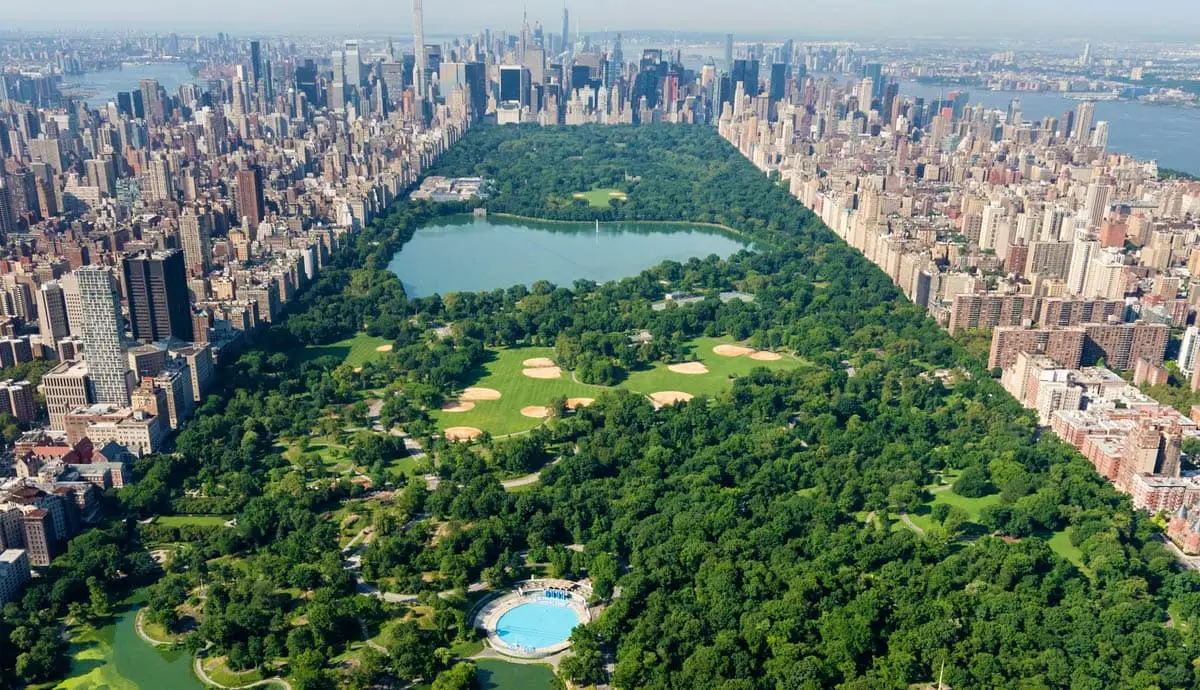

Planning & Engineering
Who Was The Landscape Architect For Central Park
Modified: January 19, 2024
Discover the visionary landscape architect behind Central Park and learn about their impeccable planning and engineering skills.
(Many of the links in this article redirect to a specific reviewed product. Your purchase of these products through affiliate links helps to generate commission for Storables.com, at no extra cost. Learn more)
Introduction
Central Park, located in the heart of Manhattan, is a beloved oasis in the bustling concrete jungle of New York City. With its lush greenery, winding paths, tranquil lakes, and iconic landmarks, it is a testament to the skill and vision of the landscape architect who crafted its design. But who was the mastermind behind this masterpiece of urban planning and green space?
In this article, we will explore the fascinating history of Central Park and delve into the world of landscape architecture to uncover the identity of its visionary designer. We will examine the importance of landscape architecture in shaping the park’s character and functionality, and discover the lasting impact of the landscape architect’s work on this iconic New York City landmark.
Central Park is not just a beautiful space; it is also a testament to the power of thoughtful city planning and urban design. By understanding the history and contributions of the landscape architect who shaped it, we can gain a deeper appreciation for this remarkable park and the role of landscape architecture in creating sustainable and enjoyable urban spaces.
Key Takeaways:
- Frederick Law Olmsted, in collaboration with Calvert Vaux, revolutionized landscape architecture with their visionary design of Central Park, creating a democratic, sustainable, and immersive urban oasis that continues to inspire and captivate visitors.
- Central Park stands as a testament to the transformative power of thoughtful design, collaboration, and a deep appreciation for nature, showcasing the enduring legacy of Frederick Law Olmsted’s innovative approach to creating sustainable, inclusive, and inspiring urban spaces.
Historical Overview of Central Park
Central Park, spanning over 843 acres, was established in the mid-19th century as a response to the rapidly growing population and urbanization of New York City. The need for a large public space where city dwellers could escape the hustle and bustle of city life became apparent.
Designed to provide a place for recreation, relaxation, and connection with nature, Central Park was the first of its kind in the United States. The park’s creation was a collaborative effort involving city officials, architects, and landscape architects, all envisioning a space that would serve as a green oasis in the heart of the city.
The park’s construction began in 1858 and took several years to complete. The design incorporated both natural and man-made elements, seamlessly blending the existing topography with carefully curated landscapes, creating an environment that transported visitors far away from the surrounding urban jungle.
Central Park became a hub of social and cultural activity, attracting visitors from all walks of life. Its open spaces hosted sports events, concerts, and other entertainment, making it a vital part of New York City’s social fabric.
Over the years, Central Park has witnessed significant historical events, including political rallies, protests, and even protests-turned-celebrations. It has been a site for environmental initiatives, art installations, and countless moments of personal connection, making it more than just a park—it is a living, breathing testament to the importance of green space in an urban environment.
Today, Central Park remains a cherished destination for both locals and visitors alike. Its iconic landmarks, such as the Bethesda Terrace, the Central Park Zoo, and the Great Lawn, continue to captivate and inspire. The park’s diverse landscapes, from the picturesque Ramble to the manicured Sheep Meadow, offer something for everyone, whether they seek solitude, adventure, or simply a place to enjoy a picnic.
Central Park’s rich history and enduring popularity are a testament to the importance of thoughtful urban planning and the transformative power of landscape architecture. By understanding the historical context and development of the park, we can appreciate the vision and efforts of the landscape architect who brought this urban oasis to life.
Importance of Landscape Architecture in Central Park
Central Park is a shining example of the vital role landscape architecture plays in creating livable and sustainable urban spaces. The park’s design not only enhances its natural beauty but also maximizes its functionality and usability for the millions of visitors it attracts each year.
Landscape architecture in Central Park serves multiple purposes. It provides a much-needed respite from the concrete jungle of New York City, offering a sanctuary for relaxation, recreation, and restoration. The careful arrangement of trees, plants, and bodies of water creates a calming and inviting atmosphere, where visitors can escape the demands of daily life.
The design of Central Park also promotes environmental sustainability. By incorporating natural elements such as meadows, woodlands, and water features, the landscape architect helps reduce heat island effect, improve air quality, and provide habitats for local wildlife. These ecological considerations not only benefit the park’s ecosystem but also contribute to the overall health and well-being of the city.
Furthermore, landscape architecture plays a significant role in creating a sense of place and identity. Central Park’s diverse landscapes, from the iconic Mall with its rows of American elms to the peaceful Conservatory Garden, each exude a distinct character and charm. The design elements, such as the carefully curated pathways and viewpoints, enhance the visitor’s experience, creating memorable moments and a connection with the natural surroundings.
In addition to aesthetic and ecological considerations, landscape architecture also prioritizes usability and accessibility. The park’s wide pathways, strategically placed benches, and accessible amenities ensure that people of all ages and abilities can enjoy the park to its fullest. Whether it’s a family picnic on a sunny day, a jog around the Reservoir, or a leisurely stroll through the Shakespeare Garden, Central Park’s design ensures that it remains inclusive and accessible to all.
Moreover, the landscape architect’s careful planning and design have had a profound impact on the social aspect of Central Park. As a public space, the park fosters a sense of community and connection. It offers opportunities for gathering, socializing, and engaging in recreational activities. This communal aspect is particularly evident during annual events, such as the Shakespeare in the Park performances or the New York City Marathon, where people come together to celebrate and participate in shared experiences.
Overall, landscape architecture in Central Park demonstrates the immense importance of careful planning, design, and execution in creating vibrant and livable urban spaces. The park’s successful integration of natural and built elements not only enhances its visual appeal but also enriches the lives of those who visit, embracing the power of nature to heal, inspire, and connect.
Defining the Role of a Landscape Architect
A landscape architect is a professional who specializes in designing and planning outdoor spaces, with a focus on creating aesthetically pleasing and functional environments that harmonize with the natural surroundings. Their role encompasses a wide range of responsibilities, from conceptualizing and designing the layout of a space to overseeing the implementation and maintenance of the final design.
One of the primary goals of a landscape architect is to create a sense of place. This involves carefully considering the site’s existing features, such as topography, vegetation, and climate, and integrating them into the design to create a cohesive and harmonious space. They consider factors such as circulation patterns, water management, and ecological sustainability to ensure that the design not only meets the client’s needs but also respects and enhances the natural environment.
Landscape architects are skilled in spatial planning and utilize their expertise to develop functional layouts that meet the specific requirements of a given site. They carefully consider how people will use the space, taking into account factors such as pedestrian flow, accessibility, and the incorporation of amenities and infrastructure. This ensures that the designed space is not only visually appealing but also practical and user-friendly.
Additionally, a landscape architect must possess a deep understanding of plant and material selection. They have knowledge of different species of plants, their growth requirements, and their aesthetic qualities. By selecting appropriate plantings and materials, they can create a visually appealing and sustainable landscape that thrives in its specific environment. They also consider factors such as maintenance requirements and long-term viability to ensure the landscape remains healthy and vibrant.
The role of a landscape architect also extends to project management and collaboration. They work closely with clients, architects, engineers, and other professionals to ensure the successful execution of the design vision. They oversee the construction process, providing guidance and addressing any issues that may arise. Strong communication and leadership skills are essential in facilitating effective teamwork and coordinating various aspects of the project.
In addition to the technical and design aspects of their work, landscape architects are also advocates for creating sustainable and resilient landscapes. They consider factors such as water management, stormwater runoff, and the use of sustainable materials. By incorporating environmentally friendly practices, landscape architects contribute to the overall health and well-being of the ecosystem and surrounding community.
Ultimately, the role of a landscape architect goes far beyond the physical design of outdoor spaces. They are passionate advocates for creating environments that not only enhance the quality of life for individuals but also contribute to the cultural, social, and ecological fabric of a community. Through their expertise and creativity, landscape architects shape our outdoor spaces, providing us with places of beauty, functionality, and inspiration.
Searching for the Landscape Architect of Central Park
The design and creation of Central Park are credited to two visionary landscape architects, Frederick Law Olmsted and Calvert Vaux, who won a design competition for the park in 1858. While both played integral roles in shaping the park, it was Olmsted’s influence and vision that ultimately defined its character and enduring legacy.
Finding the landscape architect behind Central Park began with a collaboration between Olmsted and Vaux. Their design, known as the “Greensward Plan,” blended naturalistic landscapes with architectural features to create a harmonious and inviting environment. Together, they envisioned a park that would provide relief from the city’s urban confines and offer a place for all New Yorkers to enjoy nature.
With Vaux focusing primarily on the architectural elements of Central Park, it was Olmsted who brought his background in engineering, horticulture, and landscape design to shape the park’s distinctive landscapes. Olmsted’s deep understanding of the effects of the natural environment on human well-being guided his design principles.
Through meticulous research and study of the site, Olmsted sought to create a park that would evoke an emotional response and offer a sense of respite from the fast-paced city. His design incorporated vast open spaces, meandering pathways, scenic vistas, and carefully selected plantings to create a naturalistic landscape that would change with the seasons.
The journey to uncover the landscape architect of Central Park involved an examination of historical records and documentation. The plans, letters, and sketches left behind by Olmsted and Vaux provided valuable insights into their design process and decision-making. These records revealed the depth of their creative partnership and the tremendous effort they invested in bringing their vision to life.
While Calvert Vaux’s contributions to the park are undeniable, it is Frederick Law Olmsted who is widely acknowledged as the mastermind behind Central Park’s enduring legacy. His innovative approach, dedication to creating a park that served the public, and his ability to seamlessly merge art and science in design solidified his position as a pioneer in landscape architecture.
The work of Olmsted and Vaux extended beyond Central Park, as they went on to design numerous other parks and landscapes across the United States. Their expertise and influence revolutionized the field of landscape architecture, leaving an indelible mark on the principles and practices that continue to shape urban landscapes today.
Uncovering the landscape architect behind Central Park not only sheds light on the park’s creation but also highlights the importance of visionary designers who prioritize the well-being and enjoyment of the people who experience their spaces. Frederick Law Olmsted’s contribution to Central Park demonstrates the lasting impact that a landscape architect can have on the fabric of a city, forever enriching the lives of those who visit and inhabit these spaces.
The landscape architect for Central Park was Frederick Law Olmsted, who co-designed the park with Calvert Vaux.
Frederick Law Olmsted: The Landscape Architect Behind Central Park
When discussing the landscape architect behind Central Park, one name stands out: Frederick Law Olmsted. Often referred to as the “father of American landscape architecture,” Olmsted’s influence on not just Central Park but also the field of landscape architecture as a whole is immeasurable.
Born in 1822, Olmsted had a diverse background that included work as a journalist, farmer, and public administrator. It was his work as a journalist, however, that brought him to the attention of New York City officials who were seeking a visionary designer for their ambitious park project.
In partnership with Calvert Vaux, Olmsted won the design competition for Central Park in 1858. Their “Greensward Plan” transformed the site into a groundbreaking park that redefined the concept of urban green space. Olmsted’s deep understanding of the relationship between people and their environment guided his design principles.
Olmsted believed that public parks should serve as democratic spaces, accessible to people from all walks of life. He wanted to create an environment that would promote social equality and interaction. Central Park became a place where people of different backgrounds could come together, escaping the social hierarchies of the city and enjoying the beauty of nature side by side.
Embracing naturalistic design principles, Olmsted sought to create a park that appeared untouched by human hands. He carefully selected and arranged plantings to mimic the randomness of nature, creating a sense of discovery and exploration. Olmsted also incorporated water elements, such as the iconic Jacqueline Kennedy Onassis Reservoir, to provide visitors with serene landscapes and the illusion of being far from the city.
But Olmsted’s vision went beyond providing a picturesque setting. He recognized the importance of functional design in a public park. The curving pathways and strategic placement of amenities ensured that visitors could move seamlessly through the park without feeling confined or overwhelmed.
Olmsted’s work in Central Park was not limited to traditional landscape design. He also introduced innovative engineering techniques to address the park’s unique challenges, such as the construction of drainage systems to combat waterlogging and the use of artificial terrain to create visually appealing landscapes. His attention to detail and understanding of the park’s ecological systems set a new standard for landscape architecture.
Central Park was not the only project that showcased Olmsted’s genius. He went on to design numerous other influential parks and landscapes across the United States, including the Emerald Necklace park system in Boston, Prospect Park in Brooklyn, and the Biltmore Estate landscapes in North Carolina.
Today, Frederick Law Olmsted’s legacy lives on not only in Central Park but in landscape architecture around the world. His design principles, emphasizing the harmony between nature and people, continue to shape the field. Olmsted’s belief in the transformative power of well-designed public spaces has had a lasting impact, creating urban environments that promote well-being, community, and connection with the natural world.
Central Park stands as a testament to Olmsted’s vision and is a beloved oasis in the heart of New York City. As visitors stroll along the winding pathways, gaze at the iconic landmarks, and immerse themselves in the beauty of the park, they are experiencing the extraordinary legacy of a landscape architect whose influence has shaped the way we view and interact with green spaces today.
Olmsted’s Design Philosophy and Principles
Frederick Law Olmsted, the landscape architect behind Central Park, had a distinctive design philosophy that emphasized the harmonious integration of nature and people. His approach was guided by a deep understanding of the relationship between the built environment and human well-being. Olmsted’s design principles continue to influence landscape architecture to this day.
Olmsted believed that public parks should be accessible to all people, regardless of social status. His goal was to create democratic spaces where people from diverse backgrounds could come together and enjoy the beauty of nature. He saw parks as essential components of urban life, providing a respite from the pressures of city living and promoting physical and mental well-being.
Nature played a central role in Olmsted’s design philosophy. He believed that carefully crafted landscapes that mimicked the randomness of nature could provide a sense of tranquility and respite. Olmsted carefully selected and arranged plantings to create immersive and visually appealing environments, transporting visitors to a natural oasis. His designs included meandering pathways, open spaces, and water elements, all carefully integrated to create a sense of harmony with the surrounding natural environment.
Functionality was another key aspect of Olmsted’s design philosophy. He understood that parks needed to be not only beautiful but also practical and user-friendly. Olmsted’s design of Central Park, with its curving pathways, strategically placed amenities, and diverse recreational opportunities, aimed to maximize the park’s usability and enhance the visitor experience. His attention to functionality ensured that the park was accessible and accommodating to all people, regardless of age or physical ability.
Central to Olmsted’s design philosophy was the idea of creating a sense of escape from the fast-paced urban environment. Through the careful arrangement of scenery, viewpoints, and natural features, he aimed to transport visitors to a different world within the city. Olmsted believed that by immersing people in nature, even for a brief moment, he could provide a respite from the stress and pressures of city life, offering a space for relaxation, reflection, and rejuvenation.
Environmental sustainability was also a crucial consideration for Olmsted. He was deeply aware of the ecological systems at play in a landscape and worked to preserve and enhance them. Olmsted implemented innovative engineering techniques to address the unique challenges of urban landscapes, such as drainage systems to combat waterlogging and the use of artificial terrain to create diverse landscapes. His approach to sustainability, which he referred to as “conservative engineering,” aimed to ensure the long-term health and vitality of the landscapes he designed.
Frederick Law Olmsted’s design philosophy and principles revolutionized the field of landscape architecture and continue to inspire designers to this day. His emphasis on creating accessible and inclusive spaces, his integration of natural and built features, and his dedication to the well-being of individuals and the environment have left an indelible mark on the profession. His designs are a testament to the power of thoughtful and sustainable design, enriching the lives of those who experience his landscapes and reminding us of the enduring relevance of his design philosophy.
Collaborations and Teamwork in Central Park’s Design
The creation of Central Park was the result of a collaborative effort, involving multiple individuals with diverse talents and expertise. Landscape architect Frederick Law Olmsted and architect Calvert Vaux formed a partnership to bring their shared vision to life, but their collaboration extended beyond their own collaboration, involving engineers, designers, and a dedicated team of workers.
Olmsted and Vaux’s collaborative approach to designing Central Park was characterized by a mutual respect for each other’s skills and a shared commitment to creating a park that would serve the needs of the public. They brought complementary strengths to the project, with Olmsted’s background in landscape design and Vaux’s expertise in architecture. Together, they developed the “Greensward Plan,” a design that seamlessly integrated natural landscapes with architectural elements.
Within their own partnership, Olmsted and Vaux engaged in a constant exchange of ideas and concepts. They conducted extensive research and site visits, studying the natural features of the site and considering how to enhance its existing beauty. Their collaboration resulted in a design that maximized the potential of the park’s topography and created a cohesive and harmonious environment.
Collaboration extended beyond Olmsted and Vaux to include other professionals involved in the park’s creation. Engineers, horticulturists, gardeners, and construction workers all played vital roles in the project. Their expertise and dedication ensured that the design concepts were effectively translated into reality.
The collaborative nature of the project allowed for a dynamic exchange of ideas and perspectives. It facilitated innovation in design and construction techniques, contributing to the creation of a groundbreaking park. The collaboration between all team members was essential in overcoming challenges and solving problems that arose throughout the construction process.
In addition to the professionals directly involved in the park’s design and construction, the public played a crucial role in shaping Central Park. Olmsted and Vaux actively sought input from community members, incorporating their feedback and suggestions into the final design. This participatory approach created a sense of ownership and pride among the city’s residents, fostering a strong connection between the park and the people it would serve.
Collaboration and teamwork were not limited to the initial creation of Central Park but were also essential in the ongoing maintenance and care of the park. Dedicated gardeners, arborists, and maintenance staff work tirelessly to preserve the park’s beauty and ensure its continued enjoyment by visitors. Their efforts reflect the ongoing spirit of collaboration and teamwork that has characterized Central Park since its inception.
The success of Central Park as a public space can be attributed, in large part, to the collaborative efforts of the individuals involved in its design and maintenance. The combination of diverse expertise, innovative thinking, and a shared commitment to creating a park that meets the needs of the public has resulted in a space that continues to captivate and inspire millions of visitors each year.
Central Park stands as a testament to the power of collaboration and teamwork in creating vibrant and beloved public spaces. It serves as a reminder that great achievements are often the result of the collective efforts of many individuals coming together to create something truly extraordinary.
Legacy of Frederick Law Olmsted’s Work in Central Park
The legacy of Frederick Law Olmsted’s work in Central Park extends far beyond its boundaries. His innovative design and visionary approach to landscape architecture have left an indelible mark not only on Central Park but on the field as a whole.
One of Olmsted’s most significant contributions to Central Park was his emphasis on creating a park for the people. By incorporating natural elements, meandering pathways, and spaces for recreation and relaxation, he transformed Central Park into a democratic space accessible to all. His design philosophy prioritized the well-being and enjoyment of visitors, shaping the way public spaces are conceived and constructed.
Olmsted’s legacy also lies in his ability to seamlessly blend art and science. His holistic approach to design recognized that landscapes could evoke emotional responses and impact human well-being. Through careful selection and arrangement of plants, water features, and vistas, he created meaningful and immersive experiences within the park. This artistic sensibility, coupled with his understanding of engineering and horticulture, has influenced generations of landscape architects to view their work as a harmonious blend of creativity and practicality.
Central Park itself is a testament to Olmsted’s enduring legacy. The park’s picturesque landscapes, winding pathways, and iconic landmarks reflect his design principles and continue to captivate visitors to this day. The Great Lawn, the Ramble, and the Bethesda Terrace are just a few examples of the timeless beauty and functionality that Olmsted infused into the park.
Furthermore, Olmsted’s work in Central Park served as a model for the creation of other urban parks across the United States. His designs, such as the Emerald Necklace in Boston and Prospect Park in Brooklyn, reflect his philosophy of creating harmonious landscapes that serve the needs of the community. The influence of Olmsted’s design principles can be seen in the creation and development of numerous parks and green spaces over the years.
Beyond his own projects, Olmsted’s work in Central Park sparked a broader movement in landscape architecture. His emphasis on the ecological, social, and aesthetic aspects of design set a new standard for the field. Landscape architects worldwide have been inspired by his commitment to sustainability, his attention to detail, and his desire to create spaces that promote human connection with the natural world.
In recognizing the importance of Olmsted’s work, his influence has been celebrated through various honors and accolades. The park bears his name, with a section known as the “Olmsted Woods” dedicated to him as a tribute to his remarkable contributions. Additionally, Olmsted’s significance to the field of landscape architecture led to the establishment of the Frederick Law Olmsted National Historic Site, which preserves his legacy and offers insight into his design process and philosophy.
The legacy of Frederick Law Olmsted’s work in Central Park continues to shape the way we view and design urban landscapes. His commitment to creating accessible, beautiful, and sustainable public spaces has influenced generations of landscape architects and has left an enduring impact on the field. Olmsted’s contribution to Central Park and his broader influence on landscape architecture remind us of the transformative power that thoughtful design can have in our urban environments.
Read more: Who Is The Landscape Architect Of Gettysburg
Conclusion
Central Park, with its iconic landscapes and timeless beauty, stands as a testament to the visionary work of landscape architect Frederick Law Olmsted. His design philosophy and innovative approach to urban green spaces have left an indelible mark on Central Park and continue to influence landscape architecture around the world.
Through careful consideration of the relationships between nature, people, and the built environment, Olmsted created a park that transcends its physical boundaries. Central Park is not merely a collection of trees, pathways, and landmarks; it is a living, breathing oasis in the heart of New York City, offering an escape from the demands of urban life and fostering a deep connection with nature.
The importance of landscape architecture in Central Park cannot be overstated. Olmsted’s thoughtful planning and design principles have ensured that the park remains a haven for relaxation, recreation, and community gathering. The park’s functional layouts, naturalistic landscapes, and emphasis on accessibility have made it a beloved destination cherished by residents and visitors alike.
Collaboration and teamwork were integral to the realization of Olmsted’s vision. His partnership with Calvert Vaux, along with the collective efforts of engineers, designers, and maintenance staff, contributed to the successful creation and ongoing maintenance of Central Park. Their collaboration exemplifies how diverse expertise and a shared commitment to excellence can result in extraordinary achievements.
Frederick Law Olmsted’s legacy in Central Park extends beyond its physical features. His design philosophy, which emphasizes the integration of nature and people, the promotion of social equality, and the creation of sustainable spaces, continues to inspire contemporary landscape architects. The principles he established have shaped the way green spaces are conceived, designed, and experienced.
Central Park, with its rich history, enduring beauty, and legacy, serves as a beacon of what can be achieved when thoughtful design, collaboration, and a deep appreciation for nature converge. It is a testament to the power of landscape architecture to transform not just the physical environment but also the lives of those who encounter these spaces.
As we explore Central Park and reflect on its design, let us remember the vision, innovation, and dedication of Frederick Law Olmsted. His work in Central Park serves as a reminder of the lasting impact that landscape architecture can have on our cities and communities, and the importance of creating sustainable, inclusive, and inspiring spaces for generations to come.
Frequently Asked Questions about Who Was The Landscape Architect For Central Park
Was this page helpful?
At Storables.com, we guarantee accurate and reliable information. Our content, validated by Expert Board Contributors, is crafted following stringent Editorial Policies. We're committed to providing you with well-researched, expert-backed insights for all your informational needs.
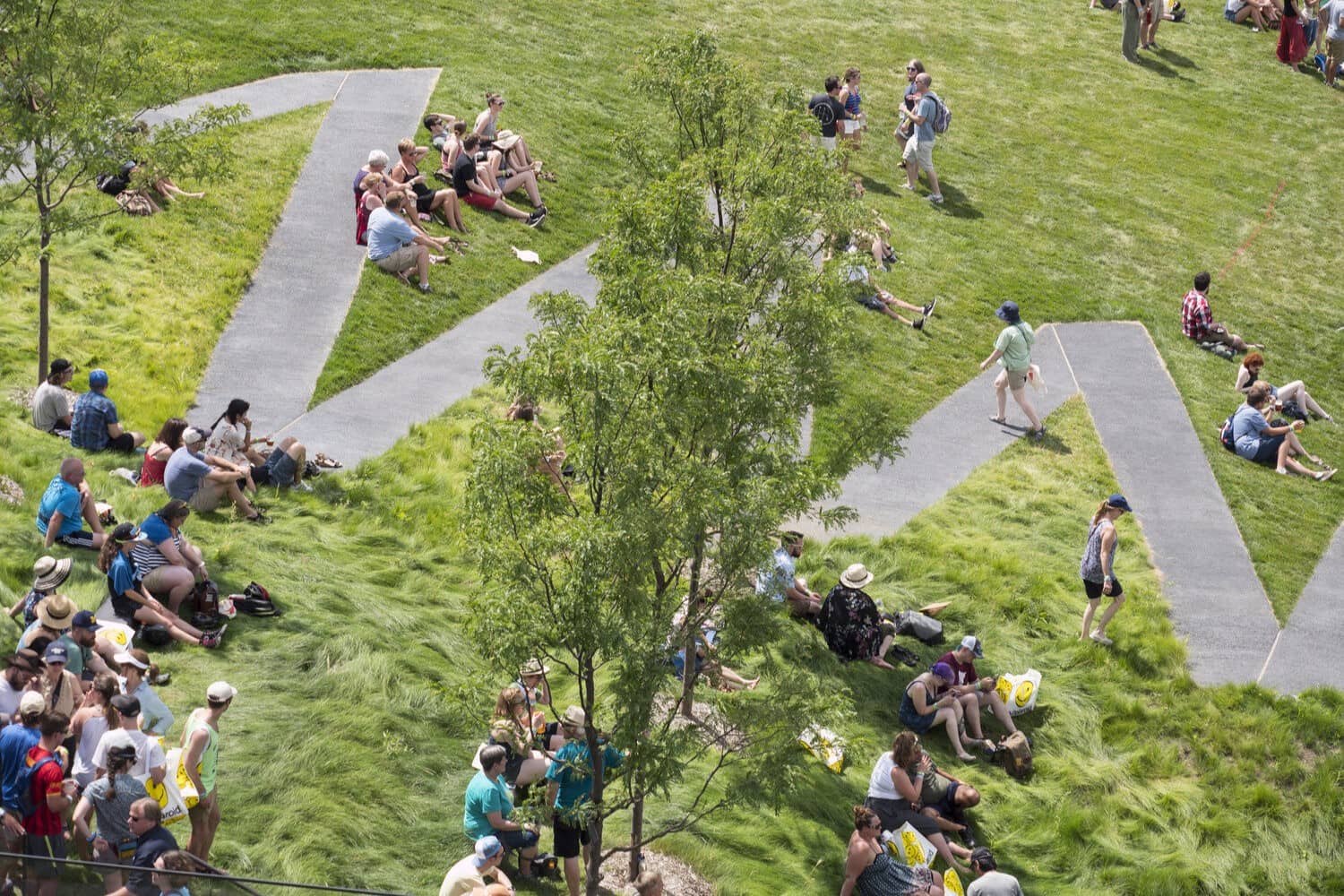

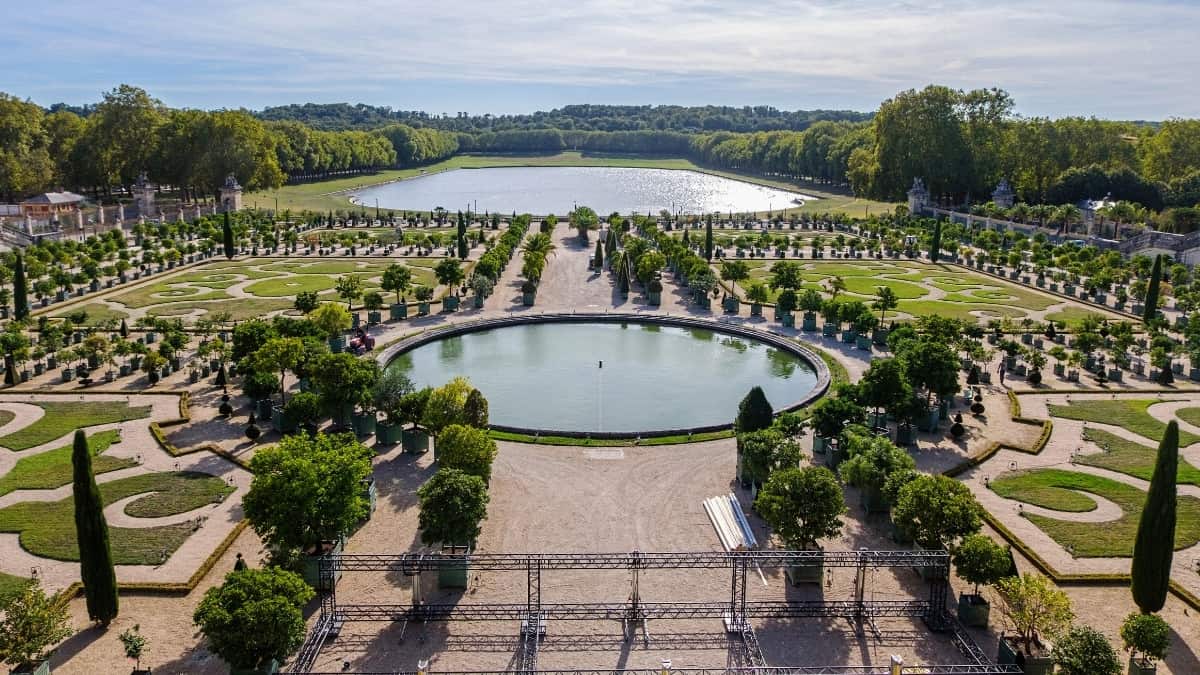

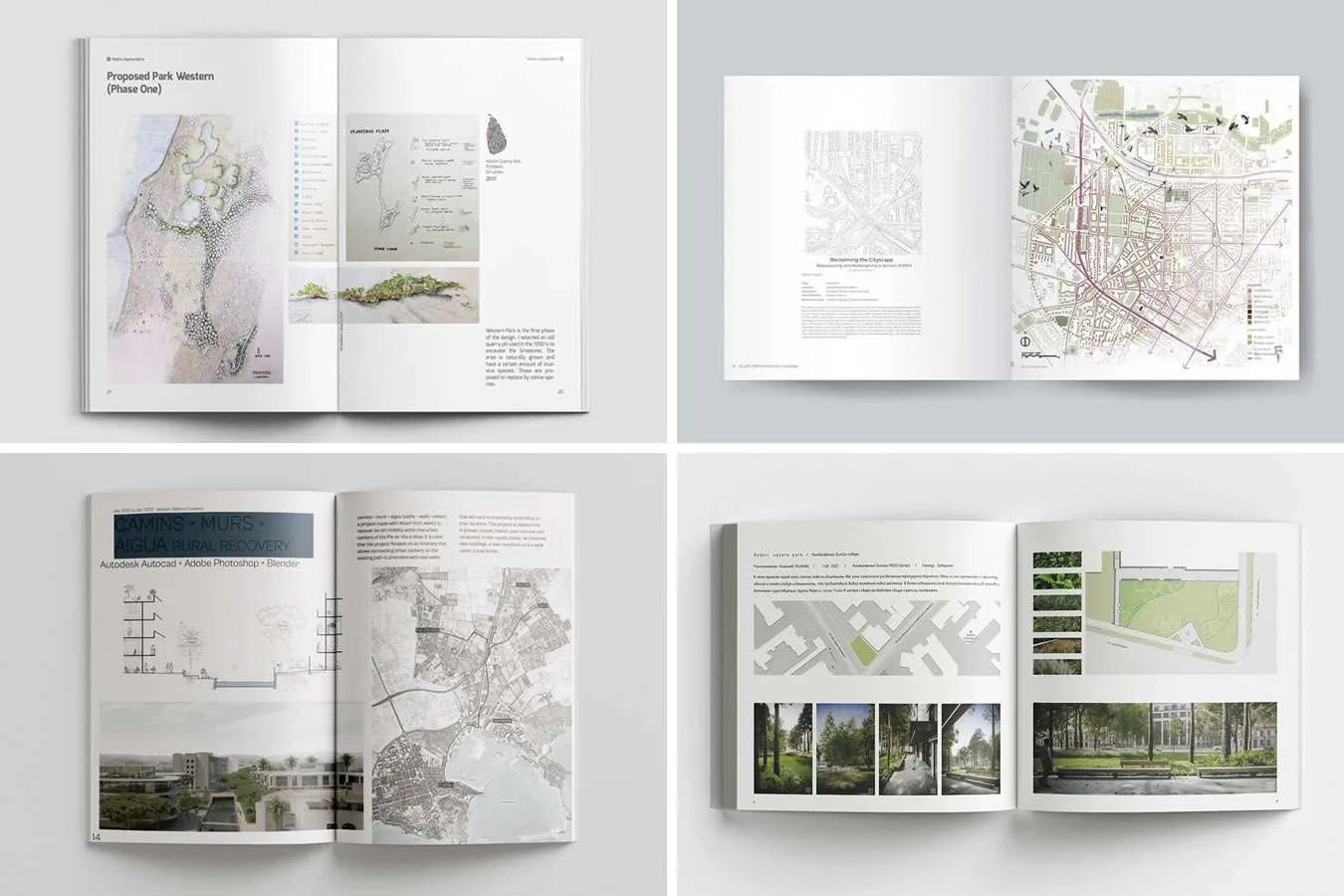
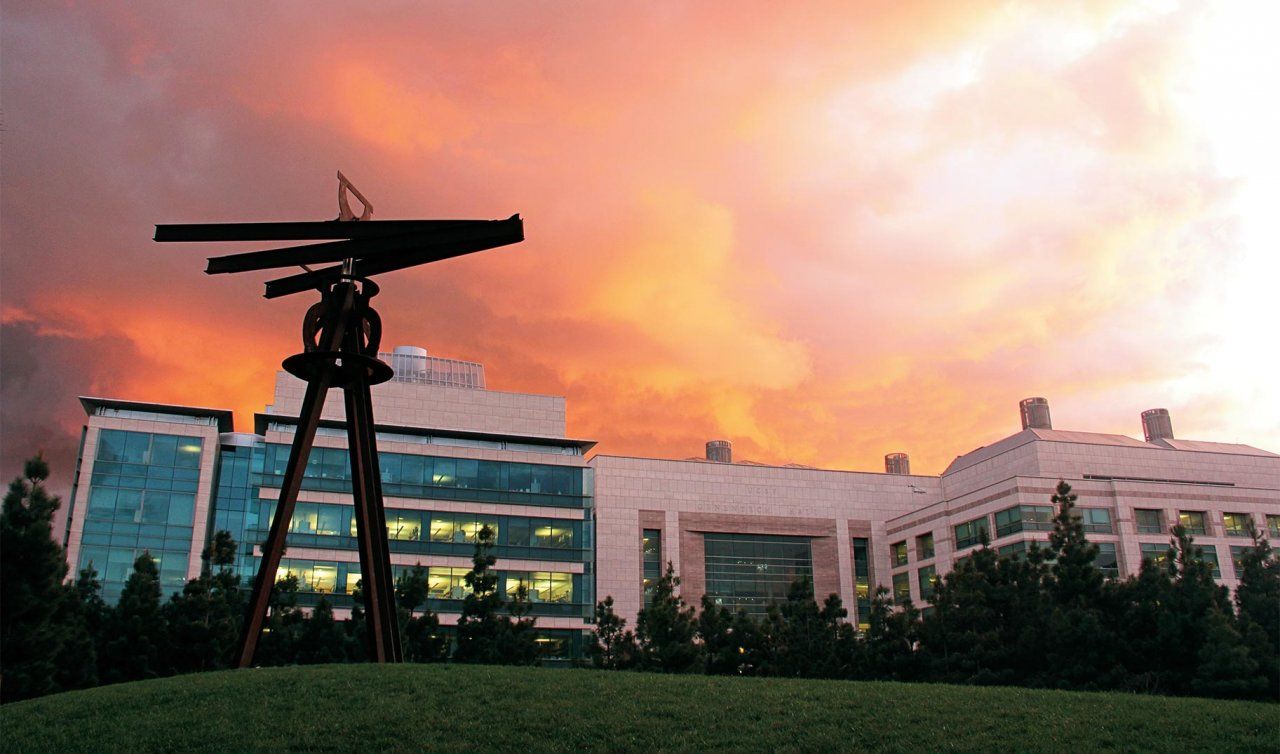

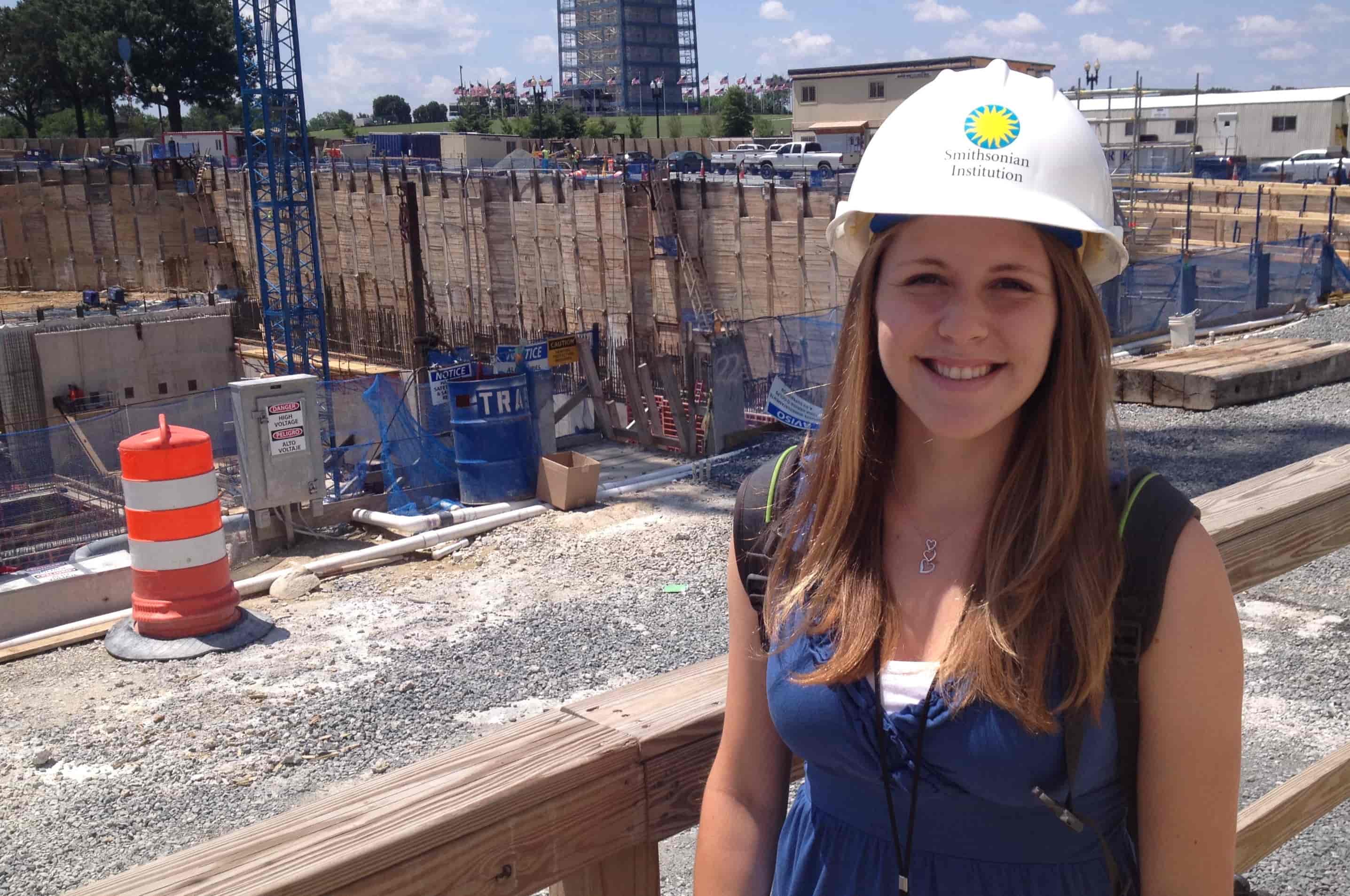
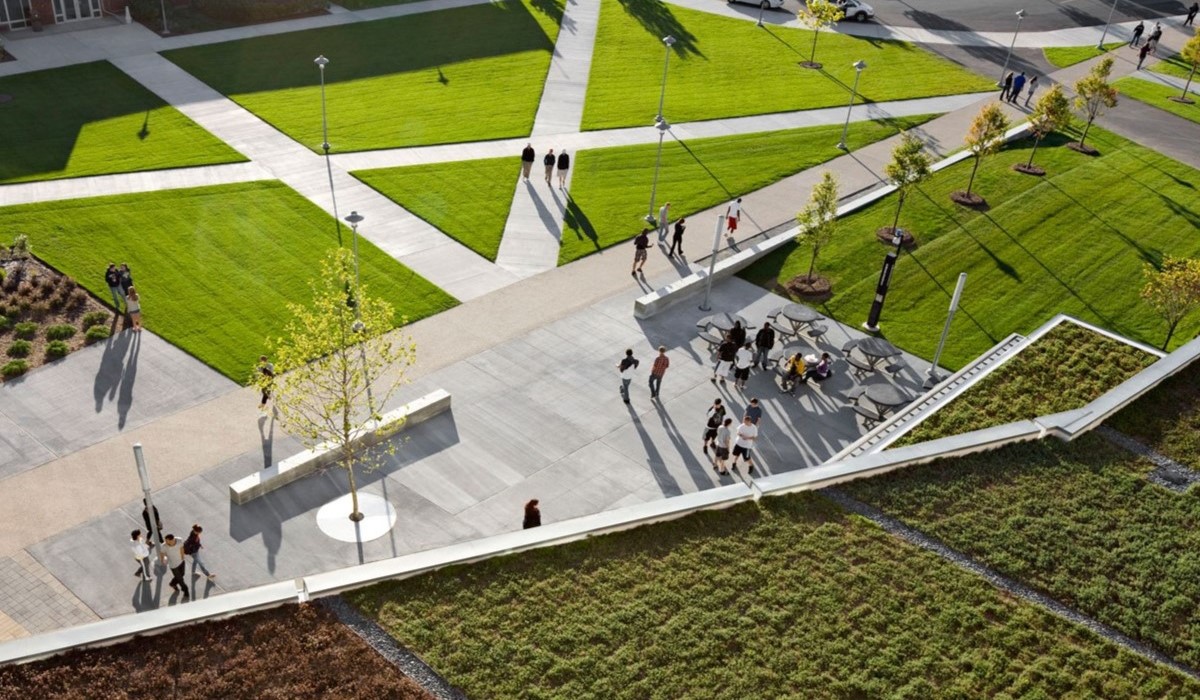





0 thoughts on “Who Was The Landscape Architect For Central Park”